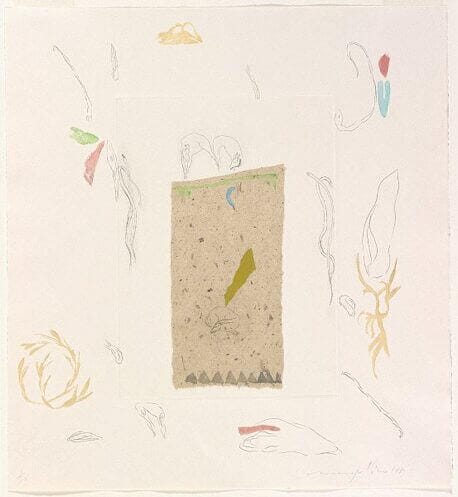Paladino Mimmo
Mimmo Paladino, born on December 18, 1948, in Paduli, Campania, Italy, is a distinguished artist renowned for his versatile engagement with multiple artistic mediums. Raised and trained in Benevento, Paladino attended Liceo Artistico di Benevento from 1964 to 1968, marking the beginning of an illustrious career in the arts.
Paladino’s career trajectory was significantly shaped by his association with the Transavanguardia movement, the Italian counterpart of Neo-Expressionism. This affiliation arose from his innovative approach of blending past artistic traditions, ranging from ancient Egyptian and tribal iconographies to Modernist painting and sculpture. His seminal “Matematico” series (2001) exemplifies his mastery in printmaking, depicting primitive male forms through semi-figurative prints.
Paladino’s debut occurred in 1968 with a solo exhibition at Galleria Carolina in Naples, introduced by the influential critic Achille Bonito Oliva. His early exposure to the 32nd Venice Biennale played a critical role in his artistic development, especially his encounter with American Pop artists. The 1970s saw Paladino exploring conceptual art and photography, but he soon returned to painting, integrating it with circular linguistic and semiotic interactions.
In Milan, where he relocated in the late seventies, Paladino continued to expand his artistic repertoire. His collaboration with notable gallerists like Lucio Amelio and Emilio Mazzoli introduced him to the international art scene, with his work showcased in New York galleries by 1980. That year proved pivotal, as he joined a traveling exhibition with other young Italian pioneers, marking the establishment of Transavanguardia.
Paladino’s artistic endeavors have extended beyond painting into sculpture and engraving, as seen in works like “Closed Garden” and his involvement in creating “It Will Have No Title.” His installation in the Italian Pavilion at the 43rd Venice Biennale and the “Hortus Conclusus” project in the early nineties exemplified his ability to merge architecture and the environment, forming works with a mystical aura.
Throughout the nineties and into the new millennium, Paladino continued to innovate, exploring video art with his feature film “Quijote,” which premiered at the Venice Film Festival in 2006. His artistic exploration often intersects with great literature and music, as evidenced by projects like “Labyrinthus,” a tribute to composer Gesualdo da Venosa.
Paladino’s work has been recognized globally, with notable installations such as the monumental piece for Piazza Santa Croce in Florence and exhibitions at prestigious venues like the Frederik Meijer Gardens & Sculpture Park in the USA. His artwork is housed in major public collections, including the Metropolitan Museum of Art, Tate, and the Museum of Modern Art.
In recognition of his contributions to the arts, Paladino was made an honorary member of the Royal Academy of Arts in London in 1999. His career is a testament to a relentless pursuit of creativity, marked by a unique ability to transcend traditional boundaries and seize artistic opportunities, making him a pivotal figure in contemporary art.
Con Musica , 1980
